Enter the wonderlands within the sprawling Aspinwall House, the main venue of the Kochi-Muziris Biennale, and feast yourself to art, and food for thought, too. Here's a look at some of the insanely creative, yet thought-provoking installations and artworks at the venue.
Défilé by AES+F

Four Russian artists Tatiana Arzamasova, Lev Evzovich, Evgeny Svyatsky and Vladimir Fridkes, going by the acronym AES+F, undertook the hard work of dressing seven recently deceased people in haute couture for a fashion shoot. These bodies in early stages of decomposition, lie motionless, sinking into the finality of being while being dressed in a high-end designer clothing. The photographs explore the eerie relationship between death and beauty and brings together two divergent, yet equally present expressions of time—death and fashion.
Secret Dialogues by C. Bhagyanath
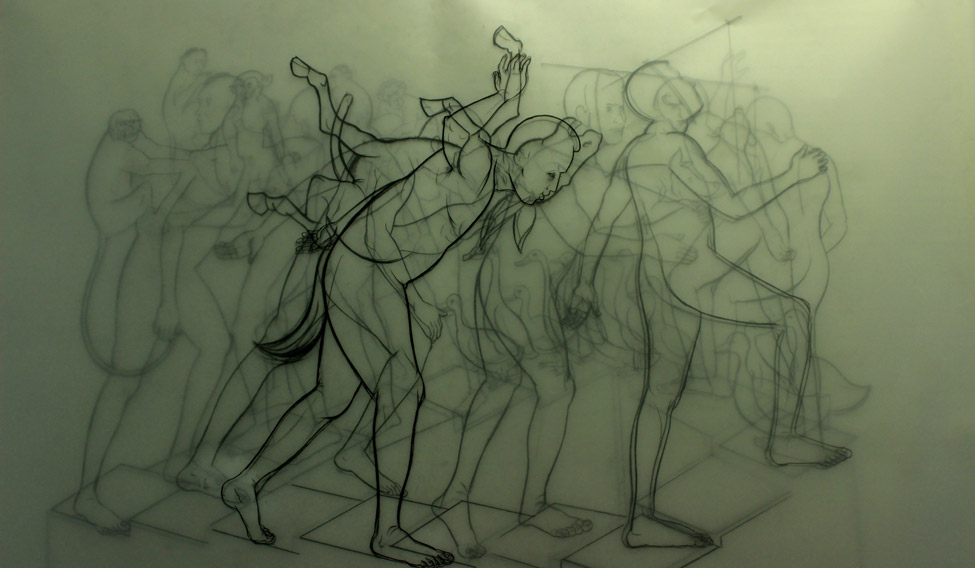
A flip-book that doesn’t need to be flipped, C. Bhagyanath's Secret Dialogues is a story about layers making the transparent apparent. Etching with charcoal on translucent sheets, creating layers of his drawings each day, he intends to form an amalgamation of an illustrated narrative. The artworks explore the human act of adding to what comes before to express the relationship between the mind and the body, the human and the animal, the inside and the outside.
Room for Lies by Sunil Padwal
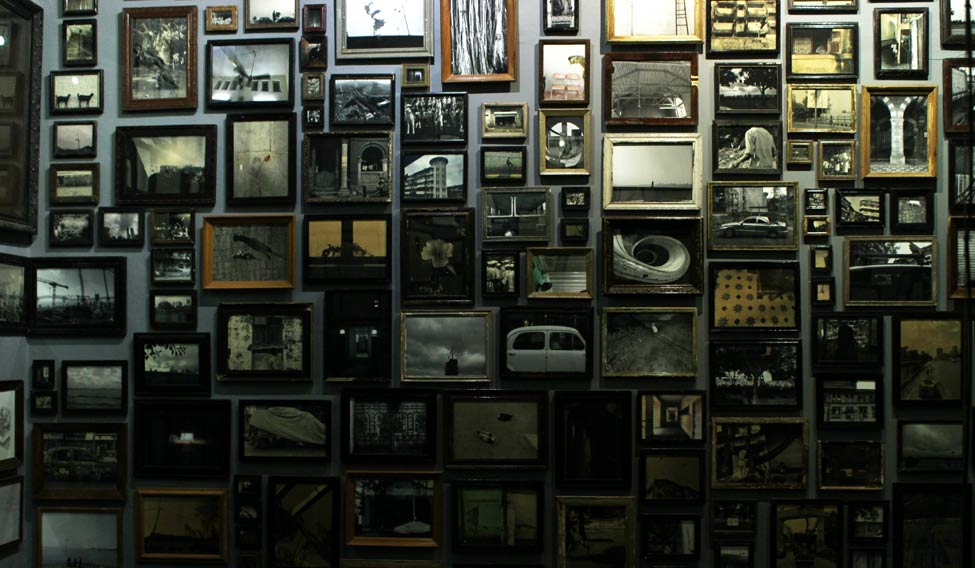
A room full of photo frames with subjects as unlikely as a dried leaf you had preserved in your diary decades ago. Padwal's Room for Lies is intricately layered with compositions and scenarios, frames within frames capturing the abundant possibility for creativity through a game of rhythms and patterns. Made out of everyday objects, minutiae, detritus, documents, now only worth the paper they are typed upon, photo frames found in flea markets and images shot in passing on an iPhone, one can find chaos and order, noise and silence, nature and construction coupled together in these frames. One walks through the artist's understanding of a modern city as that being a play of uncertainty and illusion borne out of his street experiences of his youth in Mumbai in the 70s and 80s. These frames reclaim lost objects and plans, deploying new meanings and ideas with the artist’s painstaking, hand-drawn lines.
Bathroom Set by Dia Mehta Bhupal
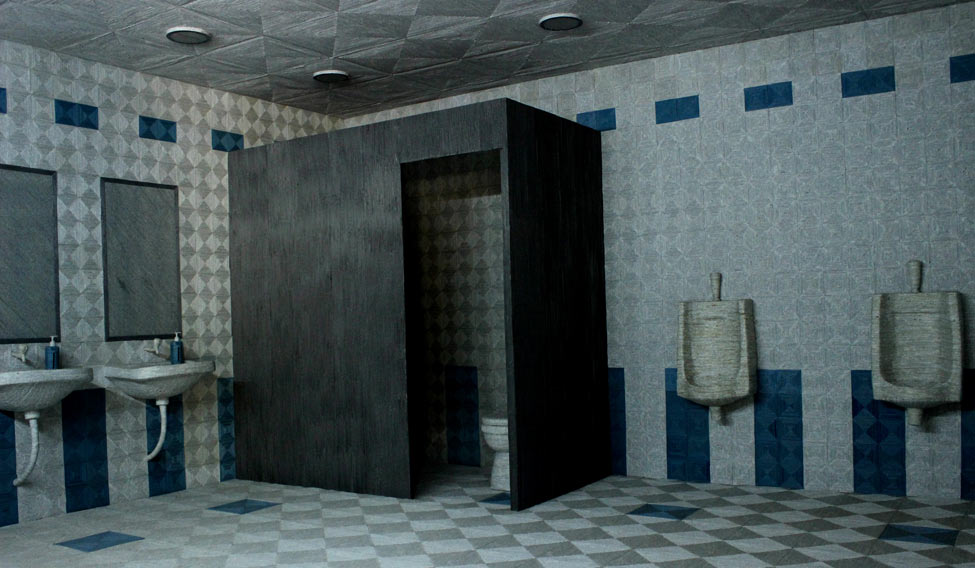
It is a little hard to imagine a living room full of life-size installations made from paper cut-outs from magazines, rolled up and glued together into many layers. where Inside Aspinwall House, you won't be disappointed. The room built by the artist is a play of size and scale with an intersperse of reality and element. The seemingly ordinary room is extraordinary with its dichotomy of strangeness and familiarity at the same time.
Big Dog by Liu Wei
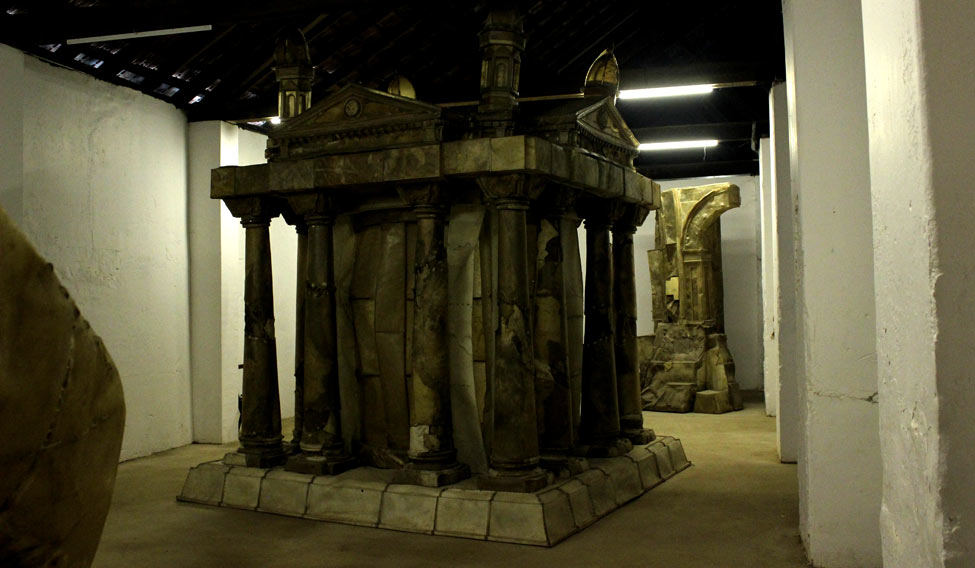
Thousands of pieces of Ox-hide dog chews hand-sewn into large sculptural installations—scaled representations of architectural constructions that include buildings, temples, ornate columns and imposing domes. These works not just present us a world of comical indulgence but also a space for our stories and narratives to be projected.
Dance of Death by Yardena Kurulkar
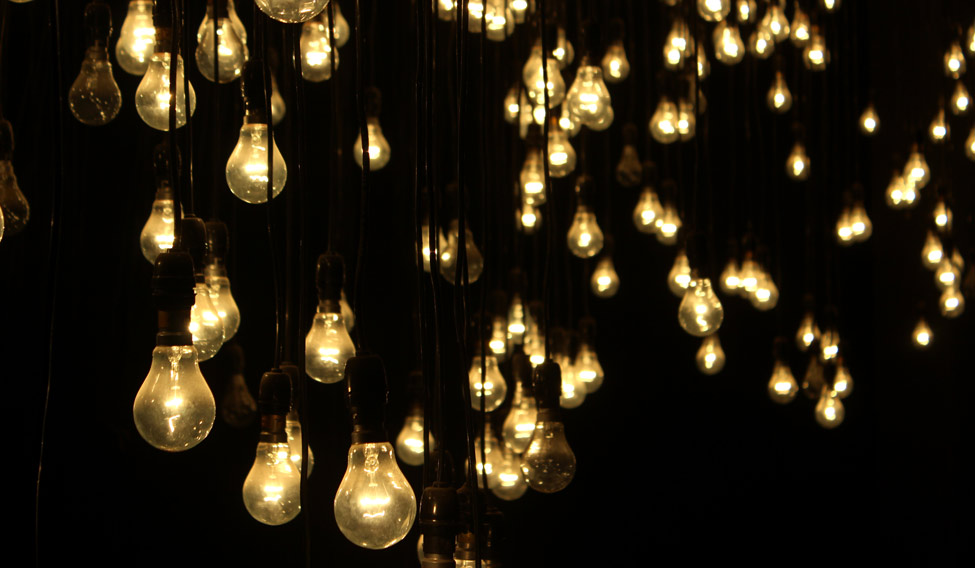
One finds a cluster of light bulbs burning brightly in utter darkness, giving away a sense of surreal sense of space and time. Interestingly enough, Kurulkar's Dance of Death creates a point of confrontation between life and death. The bulbs commemorate the date the artists body came into being. The lit up bulbs flicker unseen, in celebration of this date and their passing time. The flickering light which appears steady, is not visible to the human eye, due to its high flicker fusion rate as explained by the artist, thereby making the intermittent light appear constant. Like life, which appears constant but slowly fades into nothingness, the bulbs die as time passes, the dance begins to fade and we are left in the darkness.
Multiple Choice by Martin Walde
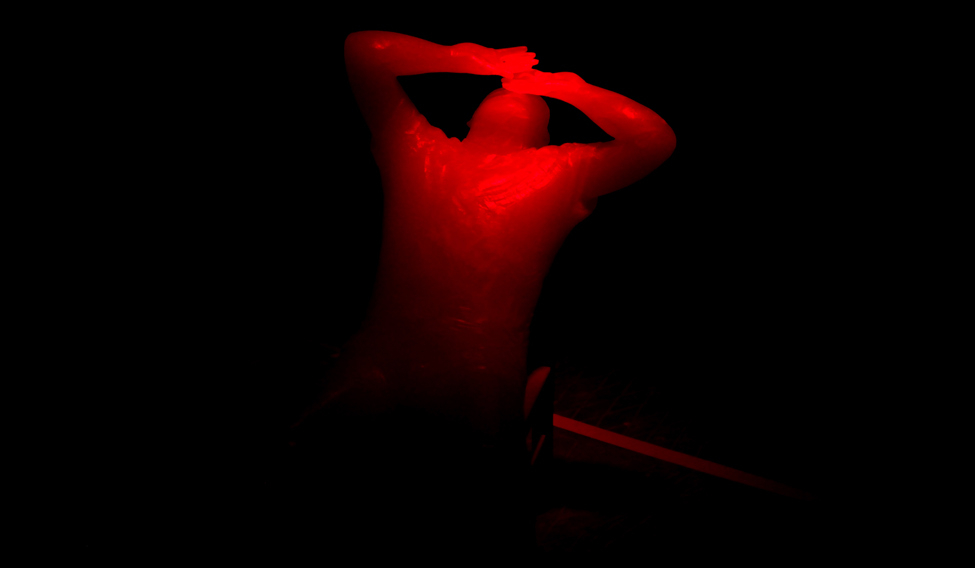
You enter a pitch dark room, where unbeknownst to you is a wax sculpture of a man with his hands covering his face. An infrared lamp placed above the head of the figure lights up, triggered as one moves in and around the space, rhythmically switching on and off as one stays there and turning off as one departs. One would wonder what is so special about this exhibit. This is where the amazement begins. The longer one stays in the space, greater the intensity of the infrared light and greater the heat generated from it. So, your presence increases the heat in the room thereby threatening the existence of the figure.
Calls and Oni-bi(Fen Fire) by Yuko Mohri
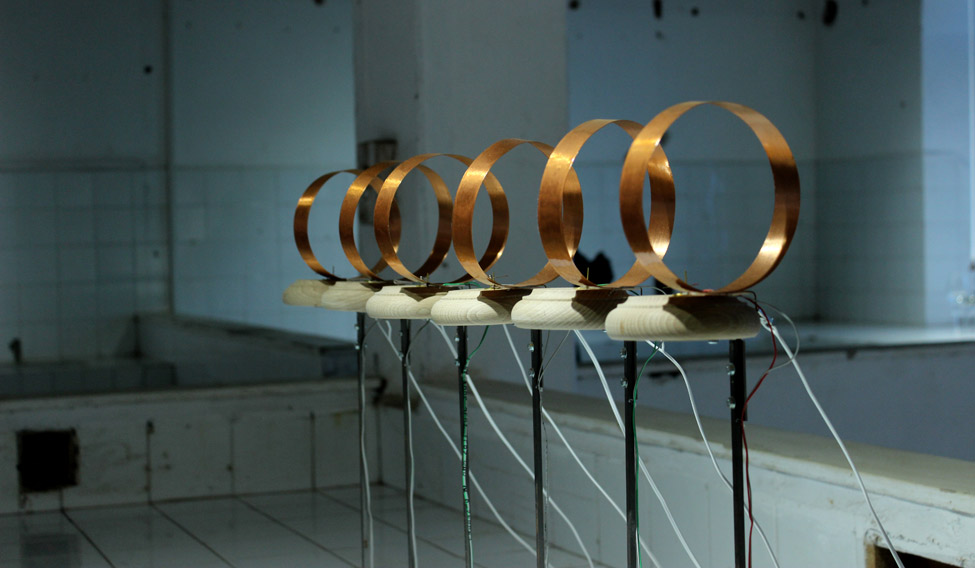
Did you know about the Japanese belief that the departed ancestors who 'call' on their descendants during mid-summer and New Year. Well, you do now. Yuko Mohri's kinetic-sonic sculptures appear to be seemingly drawn upon this belief. In Callsand Oni-bi, she makes the invisible visible and heard through sculptural forms that respond to the space they find themselves in. A collector and 'collagist' of found objects, Mohri gathers familiar, discarded objects and reframes the detritus of our lives into delicate installations. One can find bells, forks, horns, magnets, solenoids, glockenspiel, all moving in response to friction and force.
The Sea of Pain by Raúl Zurita
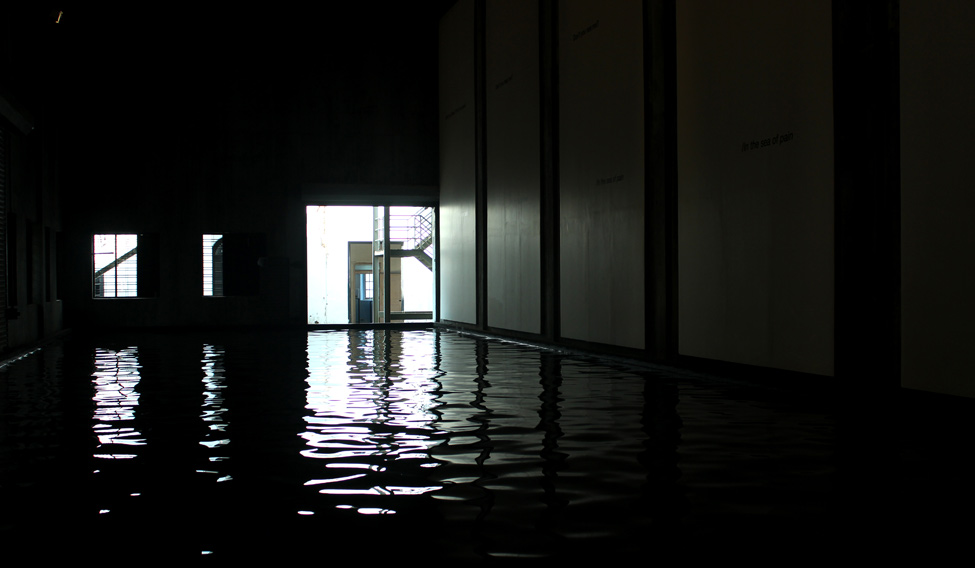
Alan Kurdi, the three-year old boy whose body washed ashore a beach in September 2015 became the heartbreaking image synonymous with the Syrian refugee crisis. However, of the five-year old Galip, Alan's older brother, there are no photographs. A dedication to Galip Kurdi, one of the unknown casualties of the Syrian war, this one hits you right where it hurts the most. The artist, in a quest to understand the sea of pain, makes the audience walk through a body of water. At the end of this stretch is when you see the wall with Zurita's words. As you read her dedication to the child with your feet immersed in seawater, you realise the embodied reality of the war on terror and the loss of innocent lives. This body of water, and having you walk through it, is a gesture that taps the conscience for reflection, meditation and redemption.





